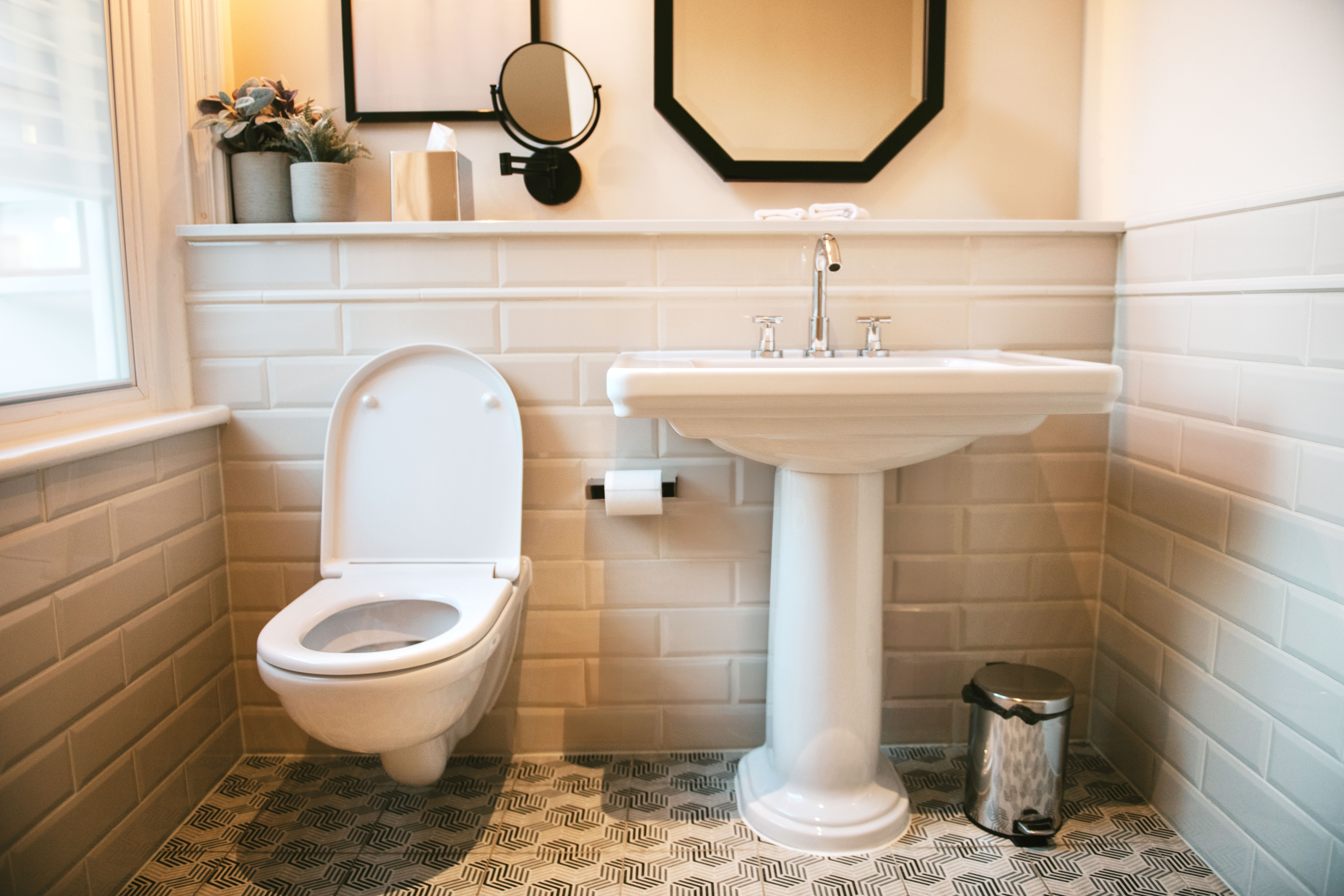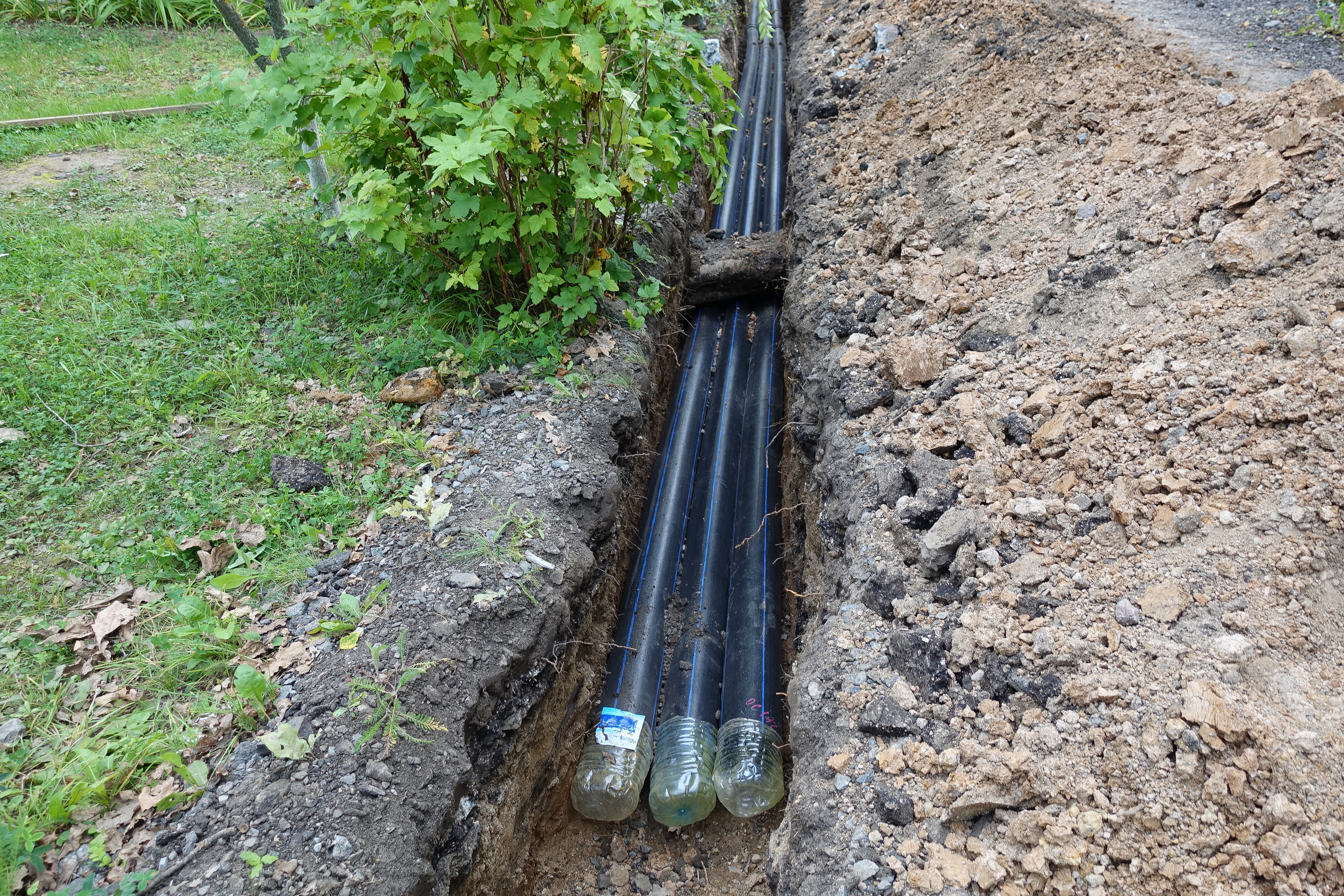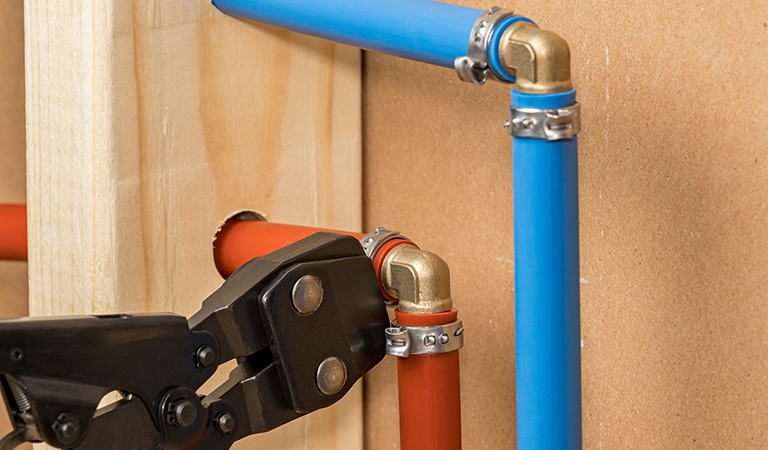
Learn how much a plumber costs in Atlanta and how to hire a licensed pro for repairs, upgrades, or emergency plumbing service in your neighborhood.
Keep your pipes freeze-free and flowing this winter


The best pipe insulation material depends on a few factors—mainly temperature, location, the type of pipe, and what you hope to achieve with insulation. Do you want a more energy-efficient home or are you looking for the best pipe insulation to prevent freezing? In general, pipe insulation materials such as fiberglass or mineral wool are best for pipes exposed to hot temperatures, while foam and rubber are a better fit for cold water pipelines but work in hot pipes as well.
To help you decide what type of pipe insulation is best, we will review the five most popular pipe insulation materials, each type’s use, and where they work best so you can pick the one that best fits your unique needs and budget.

Foam insulation is the most affordable among all of the available types of pipe insulation materials. Tubular foam costs $0.20 per linear foot and goes up to around $1.35 per linear foot. It works for both hot and cold pipes, but it performs best when used with low-temperature pipes. Foam insulation is compatible with copper and PVC pipes. This material is easy to install and comes with an adhesive that seals itself when installing.
Best For: This type of insulation is best for DIYers on a budget, particularly those insulating cold water pipes. It’s one of the most inexpensive types of pipe insulation and relatively easy to work with—whether you’re winterizing an outdoor faucet or insulating condensation-prone indoor pipes. You won’t even need to wear personal protective equipment to safely install it.
Cost: $0.20 to $1.35 per linear foot
| Pros | Cons |
|---|---|
| Works best on cold water pipes | Not as preferable for hot pipes |
| Flexible material | Certain types don’t protect well against moisture |
| Inexpensive | Certain types require fireproof coating |
| Mold resistant | Properties vary based on materials |

Fiberglass pipe insulation works well with both cold and hot water pipes. However, it’s best to use these on copper pipes that transport hot water since they preserve the temperature better than other materials. One thing to keep in mind is that these are more expensive than most other options. The typical price per linear foot is around $1.50 for 3- to 6-foot tubular pieces.
Best For: Fiberglass insulation holds up best to heat, so it’s the go-to choice for homeowners insulating water pipes with extremely hot water. It’s also a great option to insulate pipes in areas with a fire risk or places exposed to high summer temperatures (like an unfinished attic in a warm climate).
Cost: $0.30 to $1.50 per linear foot
| Pros | Cons |
|---|---|
| Good for cold and hot conducting pipes | Higher cost than other insulations |
| Performs best on hot pipes | Not as flexible as rubber or foam |
| Easy to install | Can irritate skin, eyes, and respiratory system if not properly installed |
| Comes in tubes and wraps | Moisture can make insulation ineffective |

As with foam and fiberglass, rubber is also a versatile material for both cold and hot pipes. You can use it with copper pipes, PVC, and iron pipes. Price-wise, the average cost ranges somewhere between foam and fiberglass at around $1 per linear foot.
Best For: Because it’s so flexible, rubber installation is a good choice for difficult-to-reach or challenging areas. Rubber tubular insulation is so flexible that you don’t need a tee or elbow joint but can strategically cut a tubular section.
Cost: $0.90 to $1.45 per linear foot
| Pros | Cons |
|---|---|
| Versatile and flexible | Higher cost |
| Compatible with copper, PVC, and iron pipes | Potential to off-gas VOCs during installation |
| Can be used on AC and plumbing pipes | Less availability |
| Fire-rated and condensation-resistant | Installation can be challenging |
| Works with hot or cold pipes | Shorter lifespan than other materials |

Mineral wool, also known as rock wool, is made from pieces of natural rock that are heated and spun into a thread (or wool-like) texture. Similar to fiberglass, this type of pipe insulation works on both hot and cold pipes. It’s particularly adept at withstanding extreme heat—more than 650 degrees F, depending on the brand—and it’s fire resistant.
Mineral wool is a relatively sustainable option since most of it is either recycled or recyclable, but it comes with potential health risks and can be dangerous to inhale. According to the Environmental Protection Agency (EPA), certain fine mineral fibers are possible carcinogens, though rock wool and slag wool are not classifiable.
Best For: Mineral wool is best for noise reduction and efficiency—especially around older (read: louder) HVAC systems or hot water pipes. Since it’s normally made from volcanic rock, which naturally has low thermal conductivity and fire resistance, it’s particularly good at controlling heat loss. This leads to less energy usage and lower energy bills.
Cost: $1.40 to $2.10 per square foot
| Pros | Cons |
|---|---|
| Extremely fire resistant | Higher cost than rubber, fiberglass, or foam |
| Reduces noise | Possible carcinogen |
| Repels moisture | Less availability and fewer options |
| Sustainable and recyclable | Must wear PPE for installation |

Spray foam insulation is what it sounds like—an expandable type of foam that you can spray onto pipes. The expandable spray application makes it ideal for tight or awkwardly shaped spaces. Because of its flexibility, it’s suitable for pipes (like copper) that expand with heat. It can damage certain plastics, so use caution before applying it to PVC or CPVC (chlorinated polyvinyl chloride) pipes.
Spray foam insulation is either open-cell (which has a lower R-value and lower cost) or closed-cell (which has a higher R-value and higher cost). Polyurethane foam spray is the most common spray foam material, but according to the EPA, it can potentially off-gas volatile organic chemicals (VOCs). You can find water-based alternatives or foam sprays made from vegetable oil.
Best For: Spray foam is best used in tight or awkwardly shaped spaces where it would be difficult to install other types of installation. If you’re dealing with condensation, it’s best to choose a high-density, closed-cell foam that is water-resistant.
Cost: $1.25 to $1.50 per square foot
| Pros | Cons |
|---|---|
| Great for hard-to-reach or awkward spaces | Polyurethane foam spray can off-gas VOCs |
| Reduces noise | Some types can damage plastic piping |
| Long-lasting | Open-cell foam is not water-resistant |
| Energy efficient | Can be messy to install |
There are a few things to consider when planning to insulate your pipes, such as their location, type, and why you want to insulate them. Most homeowners use insulation as a way to keep pipes from freezing or increase their home’s energy efficiency, but you might also want to insulate particularly noisy pipes or cold pipes that are prone to condensation.
Insulation is rated with what’s called an R-value. The higher the R-value, the more powerful the insulation. This is sometimes a delicate balance because you may need a lightweight or flexible type of insulation—especially around pipes that expand and contract as temperatures change. If you’re not sure which type of insulation works best, call a plumber near you. They won’t just point you in the right direction; they’ll be able to safely and effectively install your installation.
Your pipes’ location determines if you need to insulate them or not. If they’re outdoors or indoors in a non-heated room, like an unfinished basement or a crawl space, you’ll need to insulate them to prevent freezing. At what temperatures do pipes freeze? It’s a risk anytime the temperature drops below 32 degrees Fahrenheit. In this case, always choose pipe insulation with the highest R-value.
There are different types of pipes used in most homes, including copper, PVC, and PEX pipes, to name a few. These pipes have different attributes. For example, PEX pipe freezing tends to be less common than copper. Though insulation materials can be very versatile, some types of insulation work better than others, depending on the pipe's material.
This is one of the most important factors when choosing insulation. The best pipe insulation to prevent freezing is sometimes different than the best pipe insulation to prevent condensation. Temperature maintenance is essential. Another reason to insulate pipes is to reduce condensation and sweating. For example, an insulated hot water pipe runs more efficiently since it preserves hot water better than one exposed to airflow and the elements.
If you insulate pipes on your own, you’ll save on the cost of labor—but there are a lot of variables. Certain insulations require specific installation methods, and mistakes can let cold air in that freezes your pipes. In addition, not every insulation is compatible with every type of pipe, and choosing the wrong kind can lead to premature wear.
A local plumber will understand the best pipe insulation to prevent freezing for your specific pipes. If you live in an area where temperatures regularly dip below 32 degrees, it’s best to use caution and bring in a pro. A burst pipe is not worth the risk.
From average costs to expert advice, get all the answers you need to get your job done.

Learn how much a plumber costs in Atlanta and how to hire a licensed pro for repairs, upgrades, or emergency plumbing service in your neighborhood.

Discover the primary factors that will affect your main water line replacement cost in Atlanta, including length, material selection, and installation method.

Discover average main water line repair costs in Atlanta, GA, plus local factors that affect price, when to hire a pro, and how to maximize your budget.

The water main line is essential to your home’s plumbing. Over time, it can develop wear or damage. Find out how much a main water line replacement costs here.

Wall-hung toilets offer a modern style and are easy to clean, but they’re also expensive and difficult to repair. Let’s examine the pros and cons of wall-hung toilets.

Discover the average plumbing stack replacement cost, key price factors, and expert tips to help you budget for your home’s plumbing upgrade.